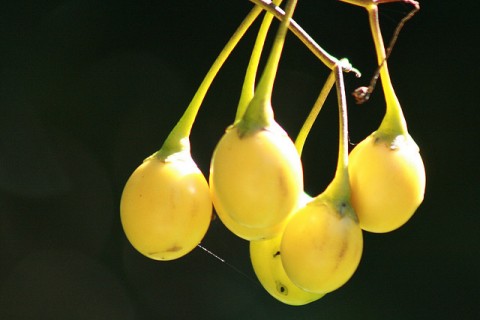The good poison
Blogger: Ethno-botanist at Landcare Research, Sue Scheele
Itch-relief treatment, jam, contraceptive – poroporo (Solanum aviculare, S. laciniatum) is a valuable plant to have around.
Commonly regarded as a weed, this soft-wooded shrub is often found on forest margins and cleared bush areas, and, like some other members of the nightshade family, has a reputation of being poisonous.
I think it is a delightful plant, with its deeply-lobed leaves, purple flowers and bright orange berries. The green, unripe berries are certainly poisonous (like green potatoes) and acrid.
The fully ripe orange berries, however, are very pleasant to taste – early pakeha settlers often used them for jam-making.
Maori planted poroporo around their villages, ate the ripe fruit, and put dampened leaves on hot stones in the hangi, to impart a good flavour to the food. (The leaves are poisonous and are not eaten).
The leaves were pounded and pulped and used as a salve on itchy skin or to treat sores. Sometimes a strong infusion was made, by boiling up the young leaves and shoots, and the reddish-yellow liquid applied to irritated skin. It has a cooling effect.
Some people say that an infusion of poroporo was taken by Maori women to prevent conception. The only references I know are very modern, and it is doubtful whether this can be regarded as a traditional herbal contraceptive. Given the leaves toxicity, it would be dangerous to try!
Poroporo does contain the steroidal alkaloid solasodine, a chemical that can be used as the raw material for developing contraceptive pills and anti-inflammatory drugs.
In the late 1970s there was a short-lived attempt to grow and process poroporo leaves for these drugs. Unfortunately, in growing trials the active chemical content was found to be highly variable among plants, and the venture proved uneconomic.

